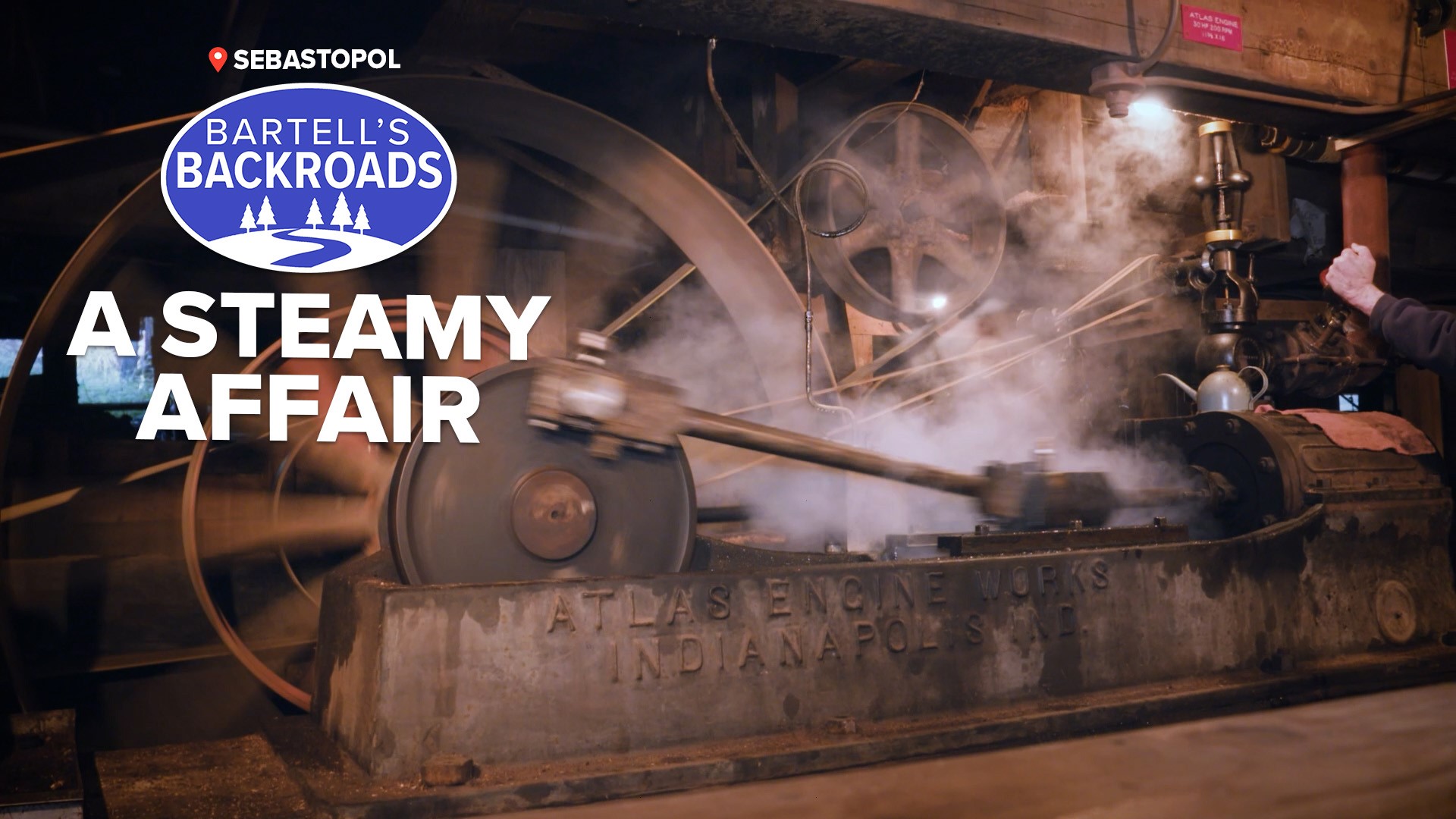SEBASTOPOL, Calif. — If you lived in Sebastopol prior to 1964, the sound of a steam whistle would have been a familiar noise. That steam whistle noise came from Sturgeon’s steam powered sawmill, one of just a few working steam mills in California.
“They ran the whistle at 8, 12, 1 and 5 o’clock,” said Tom Schaffer, descendant of the Sturgeon family.
These days, the whistle blows just a few times a year during open house events, but Schaffer can still remember when the white puffy cloud of steam appeared every day.
“I used to play in the steam as a kid and my mom would get so mad because back then they injected oil into the steam for lubrication and it ruined all my clothes,” he said.
Playing in the steam is still frowned upon today, but you can visit and watch the lost art of steam sawmilling.
Schaffer's great-grandfather Wade Sturgeon built the sawmill back in 1914. According to Schaffer, it was as kind of an act of rebellion for his great-grandad.
“He worked at sawmills as a young man and wasn’t making any money working for somebody, so he said, 'I’m going to build my own,'” said Schaffer.
Building a sawmill wasn’t easy back then. Schaffer's great grandfather borrowed and bought a lot of used equipment. In the beginning, logs were cut using steam powered saws. Trees were cut by hand, then moved by teams of horses. Business was booming.
“America was growing. After the San Francisco earthquake, there was huge demand for lumber to rebuild the Bay Area,” says Schaffer.
► See an interactive map of everywhere John has visited on the backroads
► Watch all of the Backroads videos
► Follow John on Facebook
Giant redwood was the lumber of choice and as demand grew, so did the sawmill. The horses were replaced by mechanically-powered winches called steam donkeys, and five more steam engines were added to help with production.
Getting an up-close look at the archaic machines is quite the sight. Everything here is a 100 years or older.
“The engines are pretty simple, but grease and oil are the secret to keeping them going,” said Schaffer.
At its peak, Sturgeon's Mill was producing 15,000 feet of lumber a day with a 10-man crew. That may sound like a lot but it wasn’t enough to keep up with newer gas or electric-powered sawmills.
“When these mills shut down there were more efficient mills. Ours made lots of sawdust and lots of waste,” said Schaffer.
Sturgeon’s Mill closed in 1964 but in 1992 the Sturgeon family and a group of former workers regained interest in the steam sawmill. They decided to restore it so younger generations could get hands-on experience running the mill.
Today, more than 60 volunteers donate their time to keep things going. The logs are donated by people who lost redwood trees from storm damage.
“We have a program where, if you have redwood trees and you get it to us, you get half the lumber. We cut it however you want,” said Schaffer.
The old steam whistle may not blow daily, but when it does sound off, it sure brings back memories of a more simplistic time.
Visit the mill's website to see when the next demonstration day is scheduled.
ANOTHER STEAMY STORY FROM THE BACKROADS: If you've seen a steam train in a western movie, this local museum piece is probably it.

